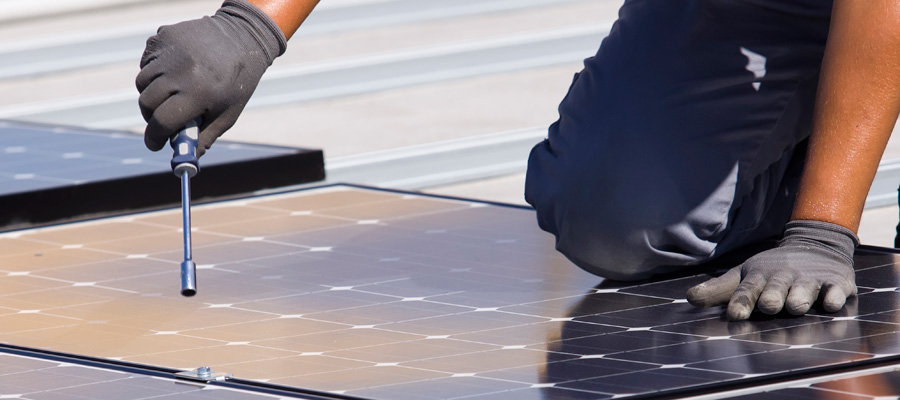Expand climate action initiatives to reflect the urgency of the crisis

The provincial government announced its new CleanBC climate plan in December and BC Budget 2019 provides an opportunity to deliver on climate action and create green jobs. In most cases, CleanBC does not specify dollar amounts for its policy measures for buildings, transportation and industry, and a solid financial commitment will be necessary to make climate action rhetoric a reality.
Two priority areas for the Budget include using increased carbon tax revenues to fund climate action investments and making the costs of climate change adaptation more transparent.
Increase carbon tax to fund climate action
BC’s carbon tax increased $5 per tonne in April 2018 to $35 per tonne, and is scheduled to rise at the same rate for the next three years, hitting $50 per tonne by 2021. Arguably too much attention has been placed on the ability of the carbon tax to reduce emissions because even at $35 per tonne it amounts to only eight cents per litre at the pump. Less attention has been given to the tax’s revenue potential: carbon tax revenues will hit $1.5 billion in 2018/19.
BC should be more aggressive and reassert leadership on carbon pricing with new annual increases of $10 per tonne starting in 2019. New carbon tax revenues can support a more ambitious capital/infrastructure plan to facilitate new climate action investments as following:
- Retrofitting buildings—Reinvest in the LiveSmart BC home retrofit program with emphasis on multi-unit buildings, including rental housing and older (less energy efficient) housing stock. In addition, there should be funding for energy retrofits of public buildings, including schools and hospitals.
- Low-carbon transportation—Large new investments in public transit for Metro Vancouver and other BC cities are needed to improve the quantity and quality of services to give people more and better options for getting around (more on this below).
- Renewable energy—The province needs to shift to 100 per cent renewable energy as quickly as possible. Measures that can insert small and community-scale renewables should be supported, including efforts by First Nations to move off diesel power. Another key strategy is expanding low-carbon district energy in urban areas modelled on the City of Vancouver’s Neighbourhood Energy Utility, which taps waste heat from sewers to provide space and water heating in Southeast False Creek.
- Zero waste—Invest to develop new capabilities for processing recycled materials in BC. Bring in deposit-and-return systems for consumer packaging and containers. And, use provincial procurement power and minimum recycled content requirements to boost the domestic market for recycled materials.
- Forest conservation and stewardship—Focus on sustainable forestry and value-added activities to create good jobs in rural areas.
- Just transition—Develop and support just transition policies to ensure BC resource industry workers and their communities are not left behind.
Half of new carbon tax revenues would fund climate action initiatives and the other half a reformed carbon credit to ensure lower- and modest-income households do not face additional costs. The 2018 increase in the low-income carbon credit to a maximum of $135 per adult and $40 per child is a step in the right direction and will help address the regressive nature of the carbon tax for low-income households. Moving forward, we recommend (and have modelled) a reformed carbon credit system that would reach a larger share of BC households. This credit would gradually phase out as income rises, but overall, 80 per cent of households would receive at least a partial credit.
Finally, the additional carbon offset fee of $25 per tonne paid by public sector organizations should be phased out. The government should abandon its offset purchases in the name of “carbon neutral government” and instead aim to achieve real emission reductions across the economy. Some offset projects may fund worthwhile objectives like forest conservation, which could instead be funded from carbon tax revenues. They should not be used, however, to pretend emissions are being reduced elsewhere.
Make costs of climate change adaptation more transparent
Climate change is no longer something that might occur far in the future. It is already costing BC a lot of money.
BC’s 2018 wildfire season set another record for hectares burned, topping the previous 2017 record. In budget terms the cost for 2018 has been less, but nonetheless, about $1 billion has been spent fighting fires over the two years. In addition, flood management costs were $162 million over budget in the current fiscal year according to the First Quarterly Report for 2018/19. The costs of all these extreme events add up fast and highlight the growing future costs of our collective inaction.
In 2018/19, the BC Budget allocated only $64 million towards fighting wildfires and costs are now estimated in the First Quarterly Report at $541 million. Even though actual costs in recent years have been much higher—a record $648 million in 2017/18—the same $64 million has been repeatedly budgeted. Between 2001 and 2016, BC spent just shy of $3 billion on wildfire response, triple what had been budgeted. And this is not counting public costs associated with repair of infrastructure, much less private insured and uninsured losses.
This represents a budgetary form of climate change denial—a belief that an extreme wildfire season only happens rarely, when it seems to be a “new normal” for the province. This ongoing need for firefighting should be reflected in the budget, not suppressed to make the budget balance look better when tabled in February. And, other elements of climate change adaption need to be funded in the budget. Over the coming years, dykes will need to be raised, storm water systems upgraded to handle extreme precipitation events and systems will need to be implemented to mitigate the impact of extreme heat.
Topics: Climate change & energy policy, Provincial budget & finance



